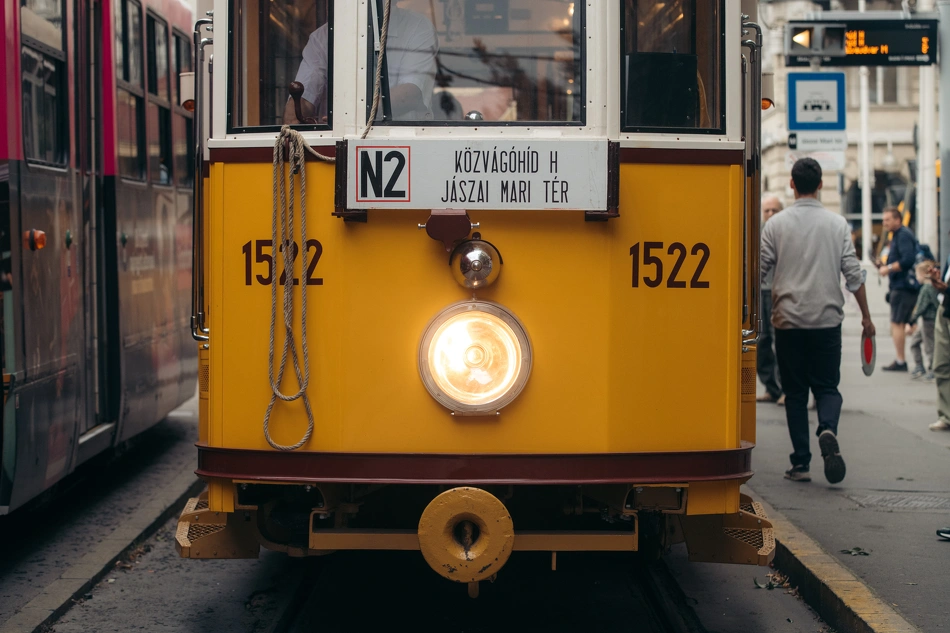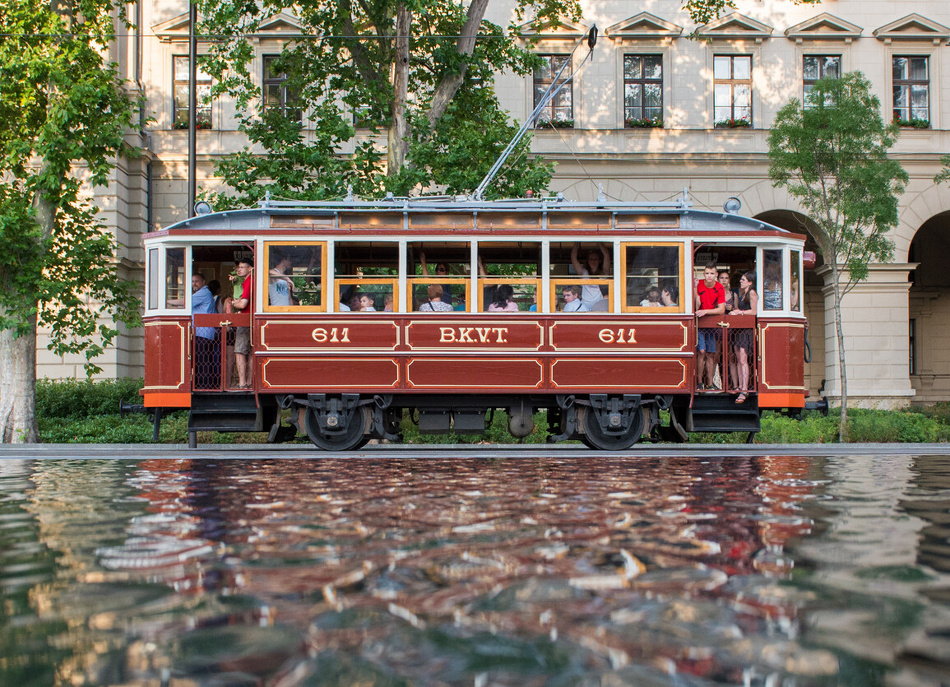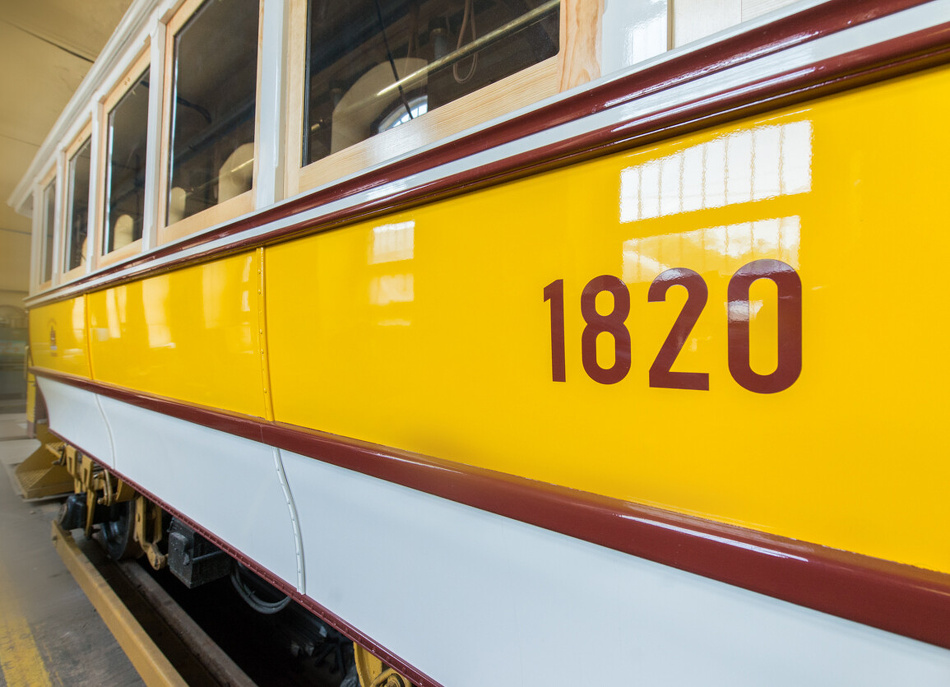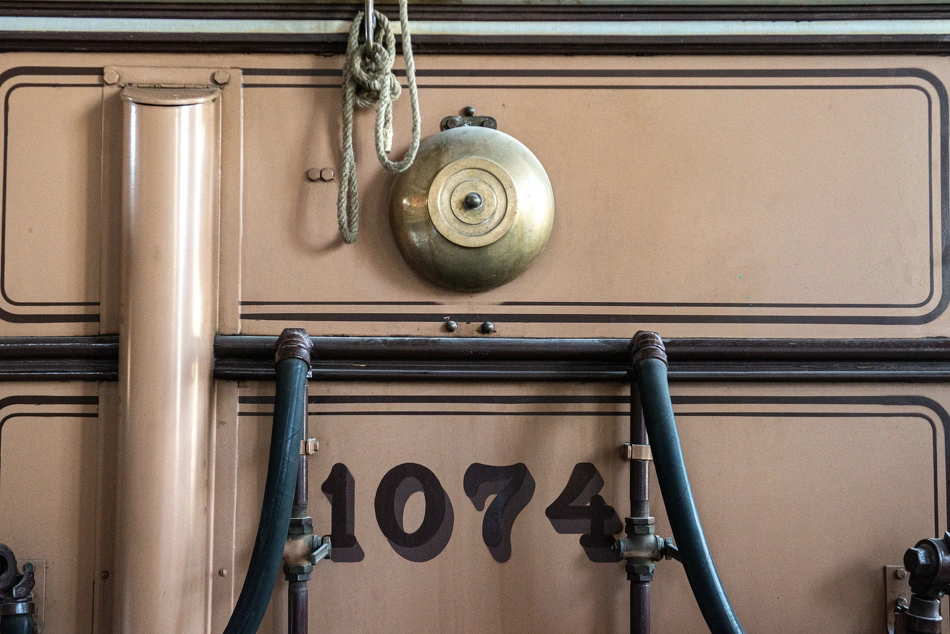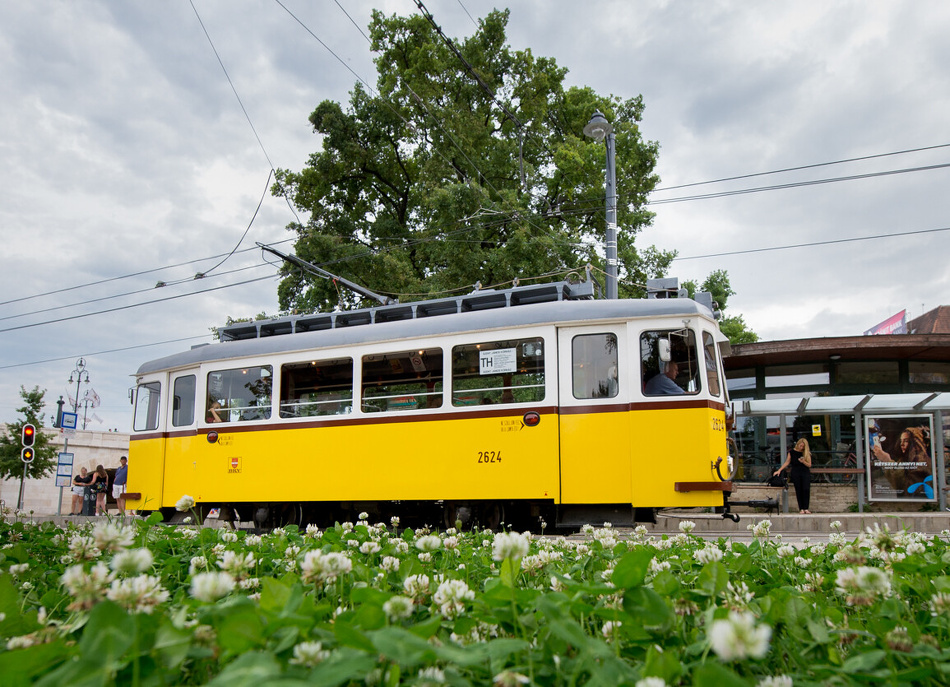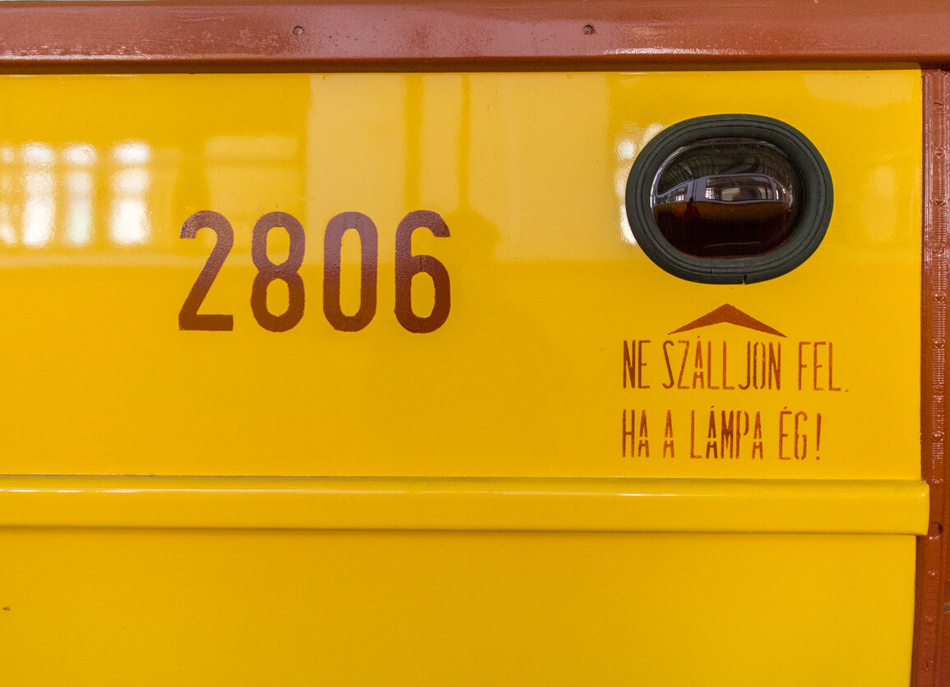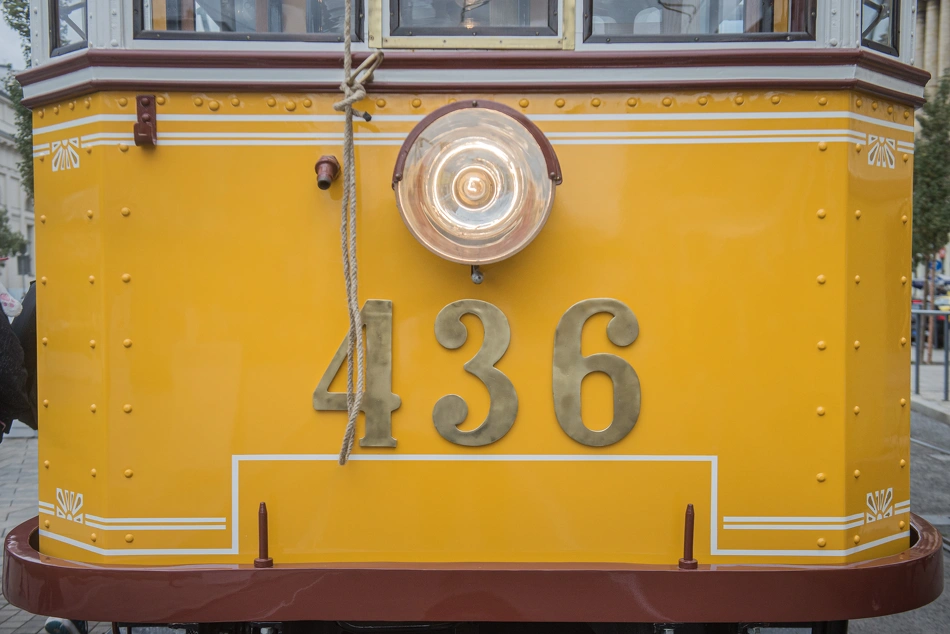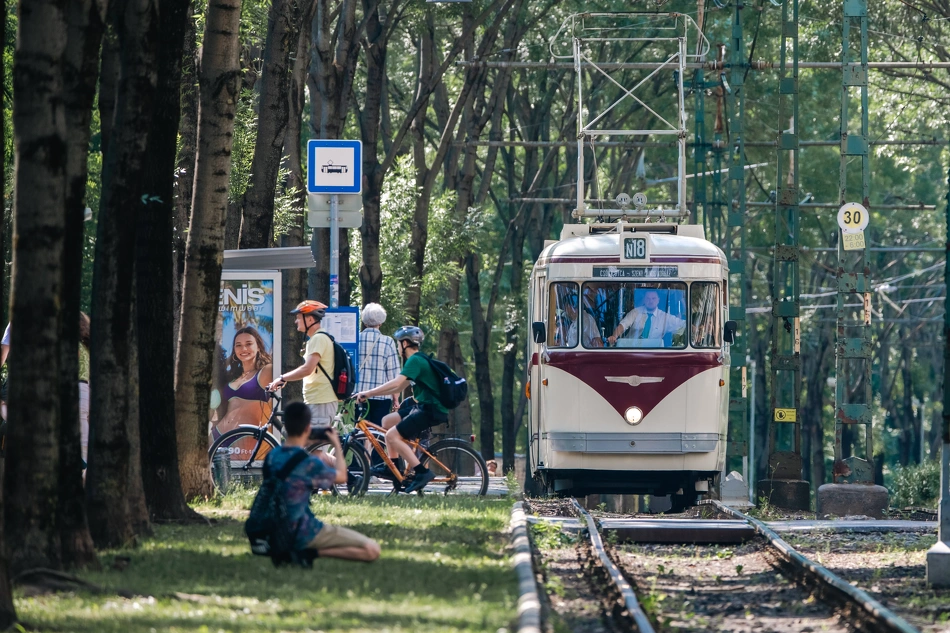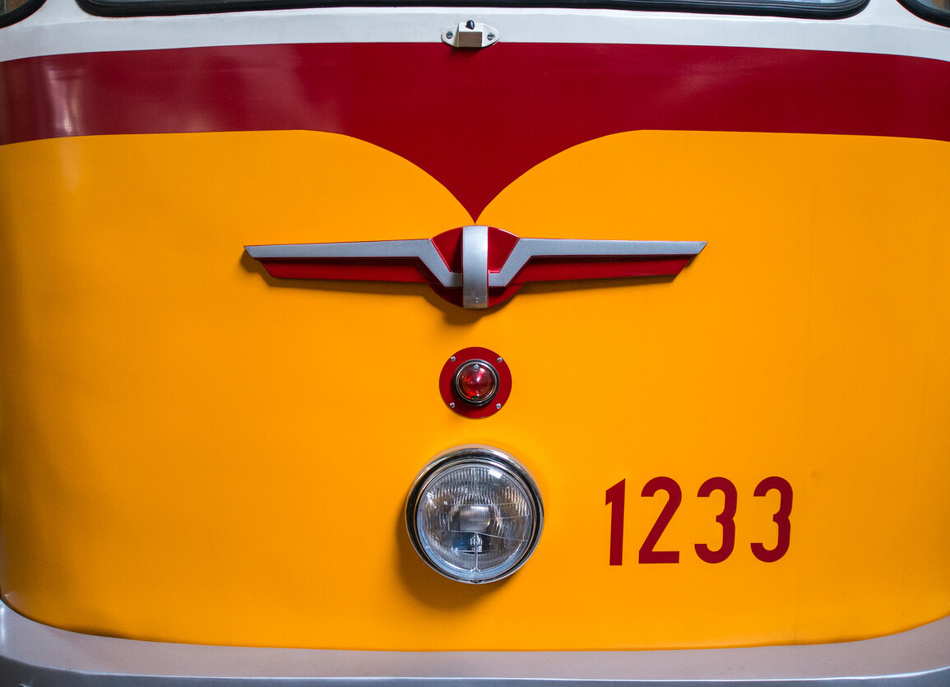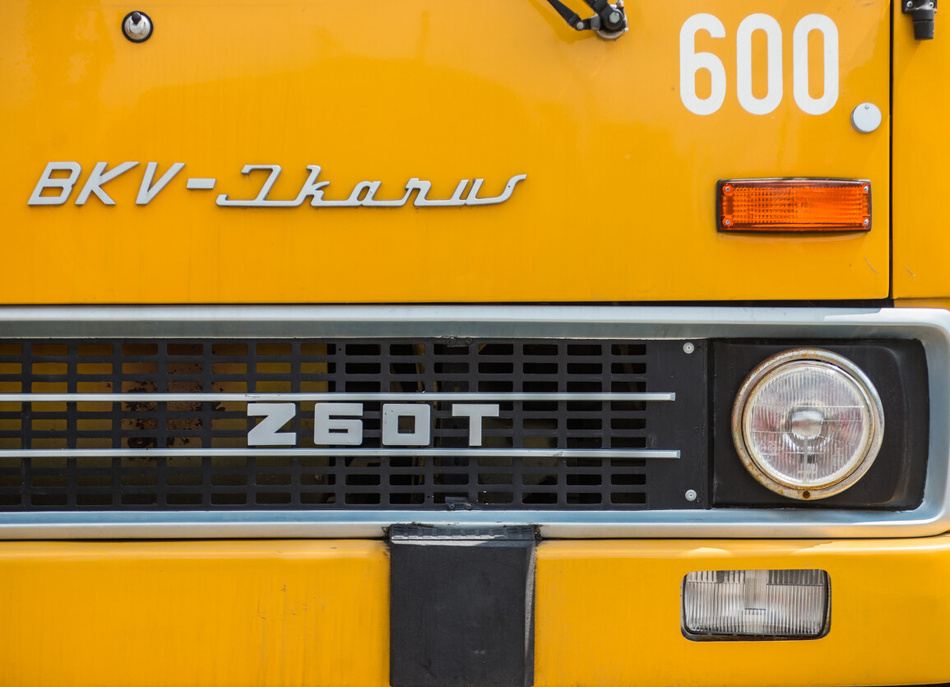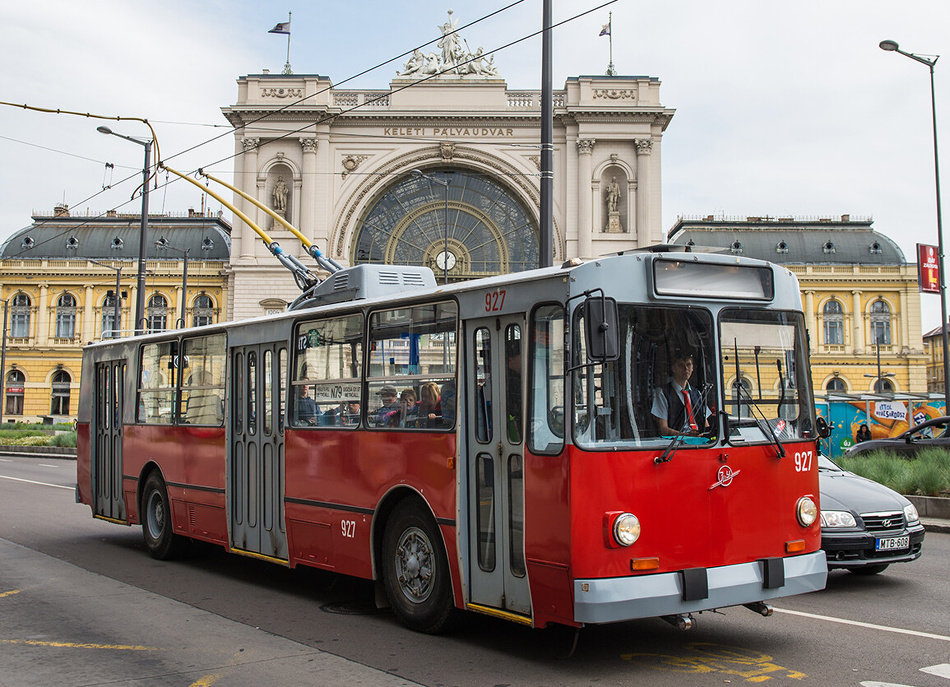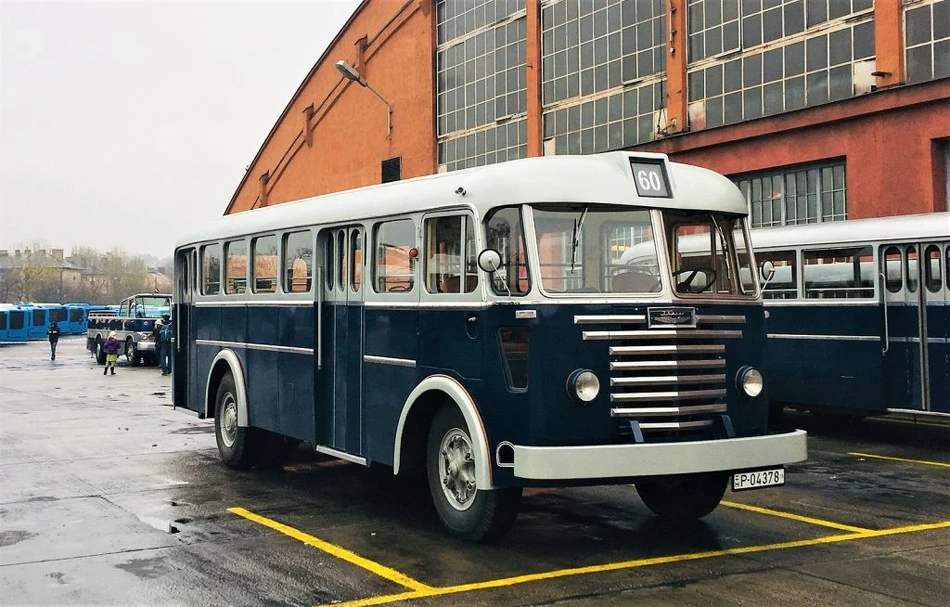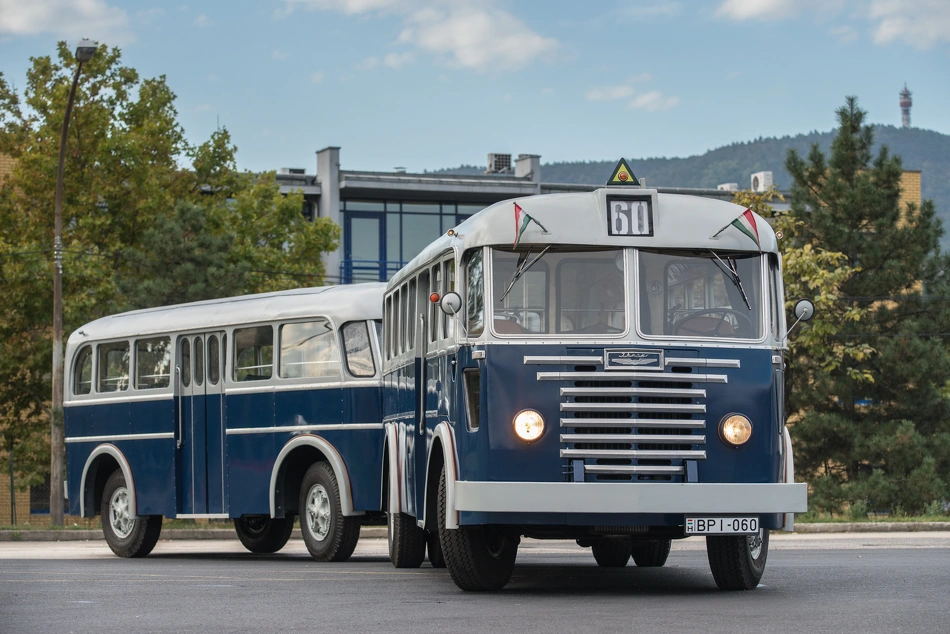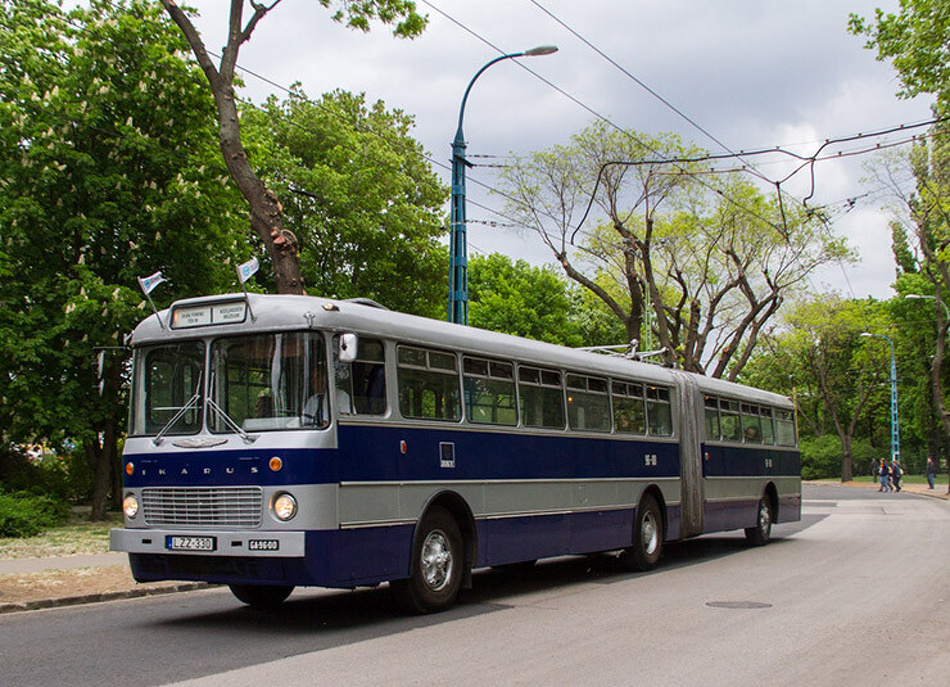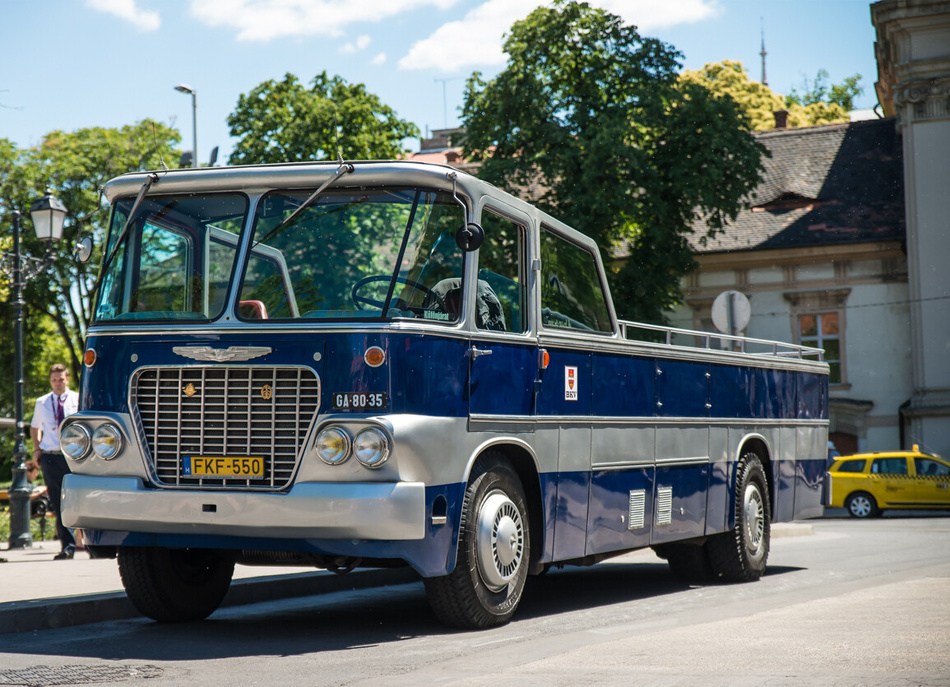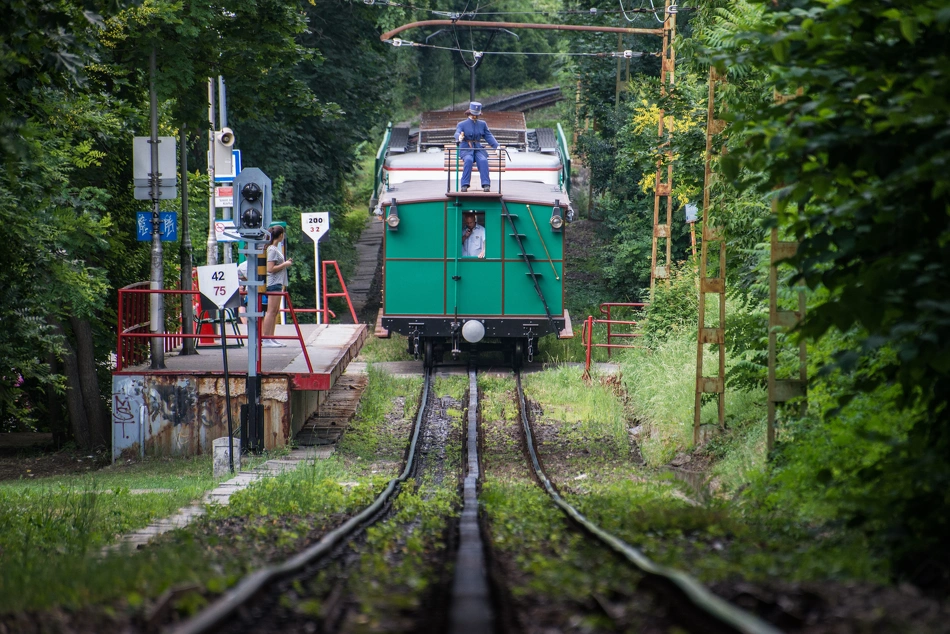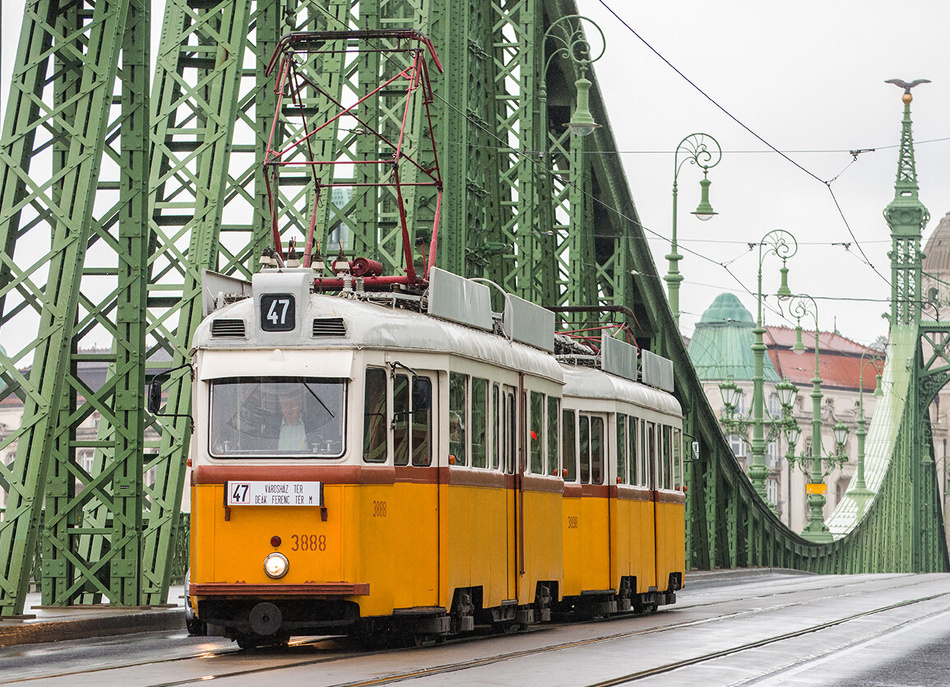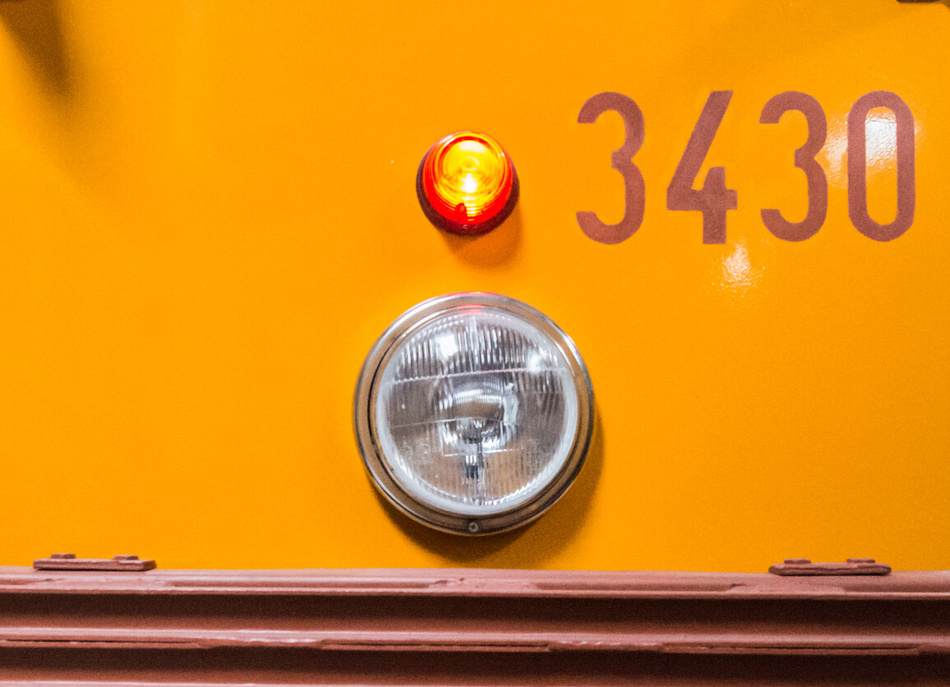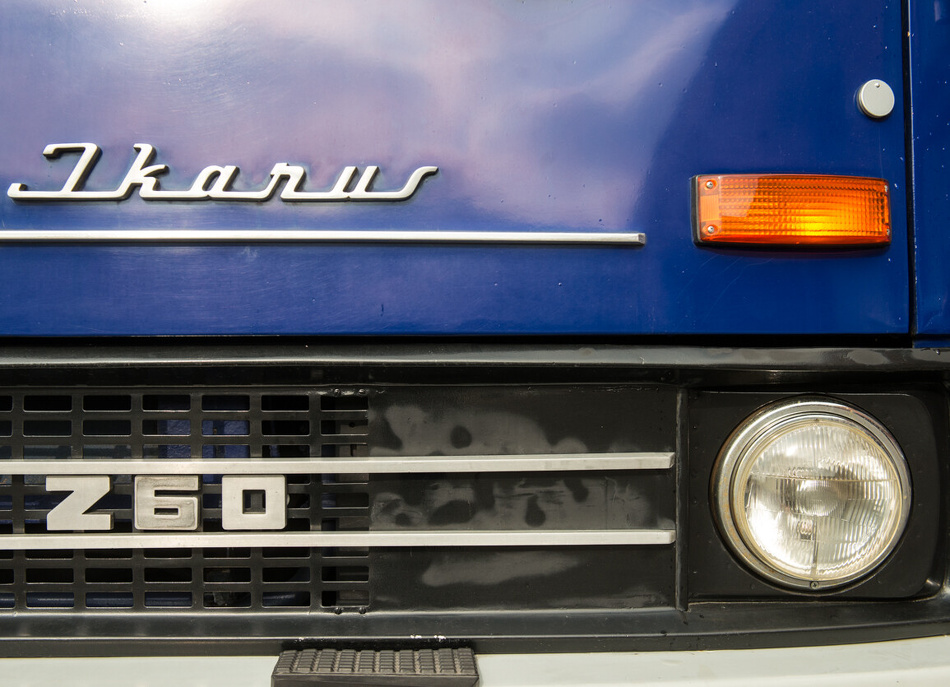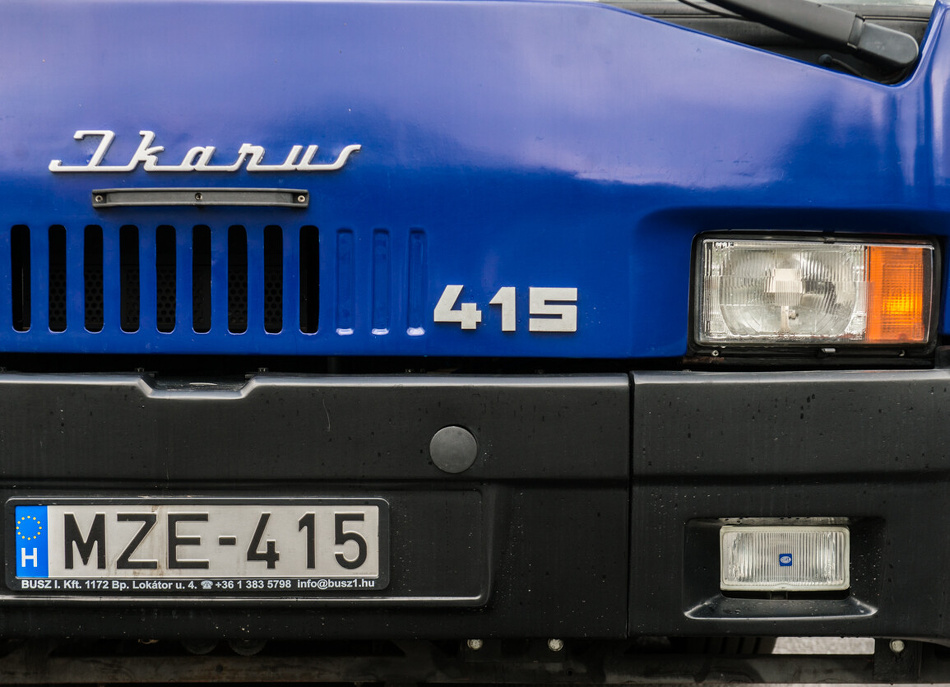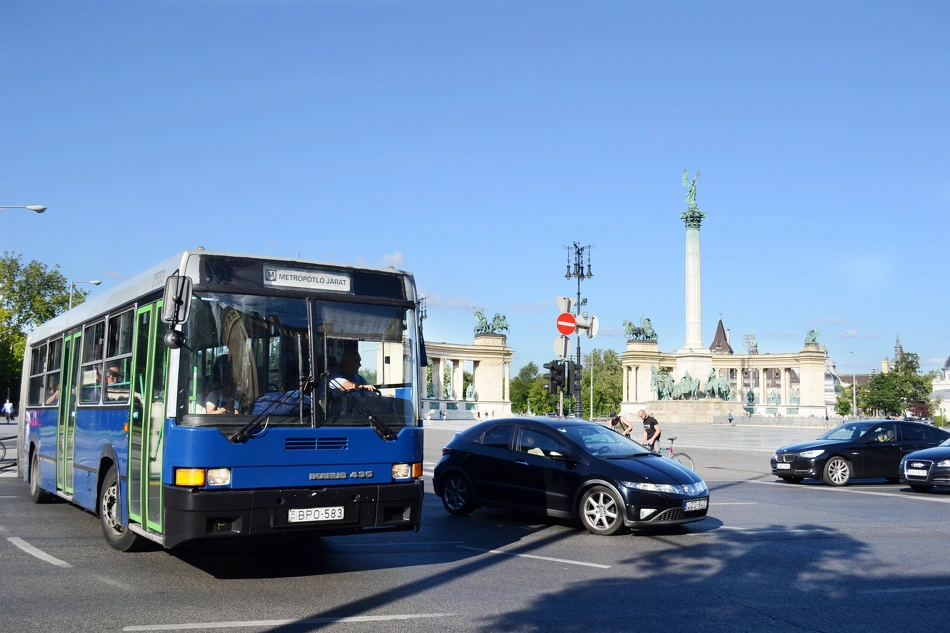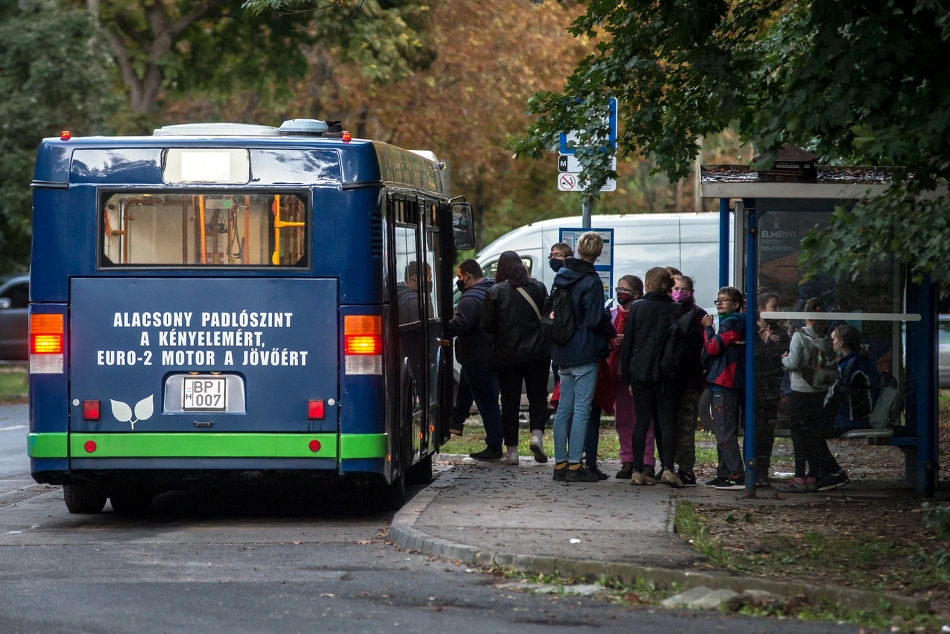Historic vehicles
▶ 1522 vintage tram ▶ 1531 vintage tram ▶ 5884 EP-type tram-trailer car ▶ 611 wooden-framed vintage tram ▶ 1820 S-type vintage tram ▶ 1074 vintage tram with re-fitted wooden frame ▶ 2624 steel-framed, two-axle vintage tram ▶ 2806 K-type vintage tram ▶ 5005 O-type BVVV tram-trailer car ▶ L-type 436 vintage tram ▶ 3720 articulated "Bengáli" vintage tram ▶ 1233 FVV "Bengáli" vintage tram ▶ Ikarus 60T vintage trolleybus ▶ Ikarus 260T vintage trolleybus ▶ ZiU-9B trolleybus ▶ Ikarus 280T vintage trolleybus ▶ MÁVAG Tr5-type vintage bus ▶ Ikarus 60 ▶ Ikarus 180 articulated bus ▶ Ikarus 630 Cabrio vintage bus ▶ Vintage cogwheel railway car made in Vienna ▶ Rowan-type Ganz vintage cogwheel railway car ▶ MUV electric
Retro vehicles
▶ UV tram ▶ Ikarus-GVM 280.94T ▶ Ikarus 435T retro articulated trolleybus ▶ ÖAF Gräf & Stift NGE 152 M17 MAN trolleybus ▶ Ikarus 260 and 280 retro buses ▶ Ikarus 284 sliding articulated retro bus ▶ Ikarus 415 retro bus ▶ Ikarus 435 retro bus ▶ Ikarus 412 retro bus
1522 vintage tram
Tramcar 1522 was built in 1939 based on the BSZKRT company's own designs as a member of the 1500 F1A series (originally with the number 1506). This tram was actually a modernisation of the F1A series, but after the refurbishment of the 1506 car, completely new vehicles were built, including 1522. The original 1522 car had had a Siemens controller and a collapsible door along with a bow collector until it was withdrawn from service in 1979. Despite the fact that most vehicles of this type were rebuilt to varying degrees during this period, by the end of the 1970s no two 1500s were the same. Following its withdrawal, it was given a partial vintage restoration, restored to its original BSZKRT-era appearance, and was moved to the closed Újpest Depot for many years for storage and museum display, but these plans were scuppered. The unguarded tram was severely damaged several times, and in 1985 it was transported to Ferencváros Depot, where after a long period of storage it was given a minor restoration and a blue repaint, and in this condition it was used as the set for the 1999 film Jakob the Liar starring Robin Williams. Interestingly, it has no air brakes, so it can be slowed down with the electric brakes and held stationary with the ratchet handbrake. In the absence of a chair, it must be driven standing up, preserving its original condition.
1531 vintage tram
Car 1531 was built in 1941, also in the Buda Main Workshop, as another member of the 1500-series. The interesting thing about this tram is that in 1976, in connection with a second rebuilding, it was equipped with a remote-controlled sliding door, the front wall was modified, a driver's seat was added, and the trailer door was remotely controlled by the installation of the coupling transferred from the UV trams. It was withdrawn from service in 1984. After being scrapped by BKV, tramcars 1520 and 1531 were transferred to the City of Szeged, the former with the number SZ 5 and the latter with SZ 6. Number SZ 5 was converted into a mechanic's car, while SZ 6 was converted into a trainer tram. As the needs of driver training changed, the trainer tram was less and less needed, and was therefore out of use for many years. The need arose to restore the SZ 6 to its vintage state, for which the UV trailer 5894 was purchased. Its renovation was not carried out in Szeged, but the SZ 6 trailer (now again with the number 1531) was purchased by BKV in 2018 for a symbolic price. During the renovation, the experts of VJSZ Ltd. aimed to achieve the last operational condition. The renovation of the motorised car was completed in 2024. The current versions of the two 1500-family trams differ so much that they could almost be considered two different types, although they only show the many different rebuilds that have been carried out over the decades.
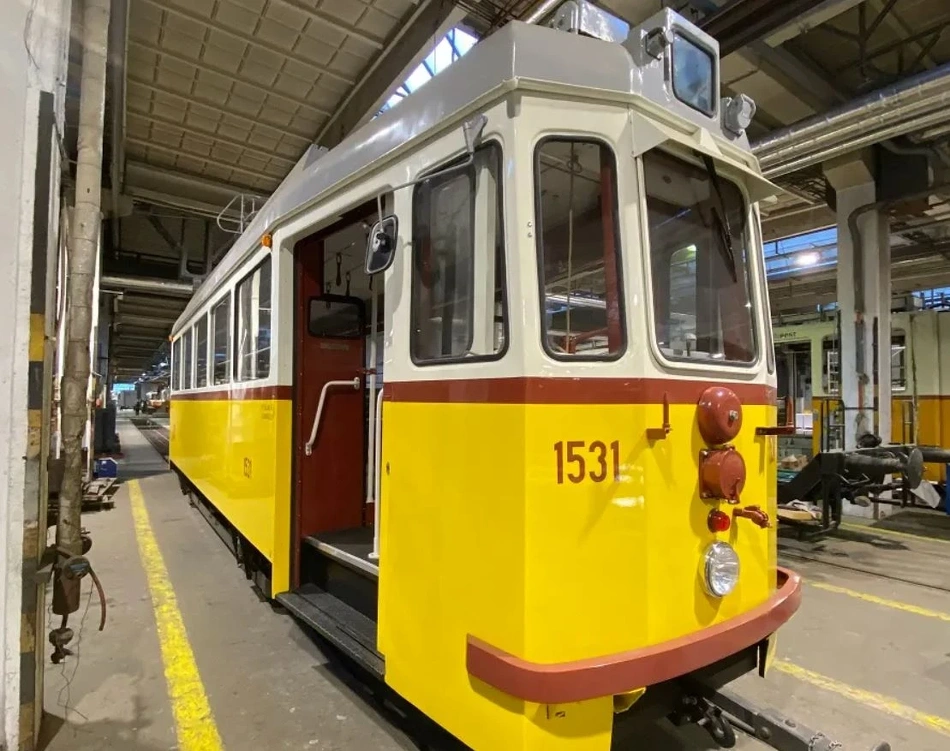
5884 EP-type tram-trailer car
The difficult economic climate after the Second World War made it difficult to purchase new powered tram cars, so the production of cheaper trailers was boosted to meet passenger demand. The EP-type trailers in the 5840-5993 number range were produced between 1949 and 1951 at the Győr plant. Interestingly, they had a solenoid braking system and were not originally equipped with air brakes. Car 5884 rolled off the production line in Győr in 1949, but its final assembly was carried out at the Buda Main Workshop. Initially these trailers were used attached to various motor cars, but from the 1960s onwards they became permanent trailers for the 1500 series motor cars. Between 1974 and 1979, the doors of the EP trailers were converted to telescopic, with the exception of Car 5884, which was already being protected from various conversions for museum preservation purposes. It is the only car to survive with an open platform layout. This trailer ran in regular service until 1979, when it was refurbished together with motor car 1522. It was not preserved after that date, and its condition deteriorated steadily in the Szentendre museum. In 2020, BKV specialists completed a full refurbishment of the trailer, restoring it to its original wooden structure and putting it back in its manufacturing state. The most unique piece in the vintage tram fleet is open-platform trailer 5884 with collapsible doors along with solenoid and air-brakes.
611 wooden-framed vintage tram
Between 1907 and 1909, the Schlick factory produced the BKVT S-type wooden-framed trams, of which a total of 130 S-type trams were built for the Hungarian capital's transport system. Vehicle 611 was built in 1908. In 1924, it was given the number 1850, in accordance with the new numbering logic of the BSZKRT. Until the end of World War II, very little modernisation was done on the tram: the seats at the partition and opposite it were removed, but eventually rebuilt. Following a 1934 decree, the inward-opening double doors were replaced by downward-opening Hűvös-Tóbiás type swing-down locking grilles, similar to other types in service at the time. In the 1950s, the increased travel demand made it necessary to convert part of the fleet into twin cars, and as a result, car 1850 was converted (including a more modern engine) and after its conversion into a twin car, it continued to run under the number 1715 until its scrapping in 1976. Initially, there were no plans for car 1715, but it was eventually fully refurbished, which was complicated by many factors. Due to a lack of original parts, the renumbered 611 car was fitted with different engines and power controller, and its chassis was fitted with spiral wire resistors instead of the original iron plate starter resistors. The original pantograph could not be used either, because it would have had to be replaced daily due to wear; instead, the Fischer slip-pin pantograph of the BSZKRT-era was fitted. Since its complete restoration to its original BKVT-period condition in 1987, the vehicle has been preserved and its technical and aesthetic condition has remained impeccable. It is an unmissable vehicle in the Budapest heritage tram fleet.
1820 S-type vintage tram
Like tram 611, the current tram number 1820 was built in the Schlick factory in Budapest, although slightly earlier than its counterpart, in 1907, with the number 571. Tram 571 was given the number 1820 in 1924, in line with the new numbering system of the BSZKRT. A 1934 decree replaced the inward opening double doors with downward opening Hűvös-Tóbiás-type collapsible grid-doors, as on its later counterpart, which then bore the track number 1850. The car was also fitted with manual signal lights at this time. By the 1950s, due to increasing passenger traffic, the decision was made to twin the majority of the fleet. In 1950, the 1820 car was given the number 1714 and became the twin of the 1715 car, also renumbered at the time. They ran together until 1976, when they were withdrawn from service. After that, they were used as nostalgia coaches, also as twins, until their final scrapping in 1982, when they were withdrawn from service. While its twin, numbered 611, received a complete overhaul in 1987, the 1714 remained in the open air for many decades in the Szentendre Urban Transport Museum, in a deteriorating technical condition. Finally, as the 50th anniversary of the founding of BKV approached, the decision was made to restore the car to its BSZKRT-era condition. The renovation was completed by 2018, it was given back its 1820 number and it has been in heritage service since 2019.
1074 vintage tram with re-fitted wooden frame
The BKVT V-type motorised car was a series of electric motorised cars produced by Ganz and the Gép- és Vasútfelszerelési Gyár Rt. of Kistarcsa, 80 of them were built between 1911 and 1912 for the BKVT. These were the most robust trams of BKVT, originally also equipped with conduit current collection. Tram 1074 was built in 1912, and by 1923 it was taken over by BSZKRT, who replaced the original pantograph with a bow collector. As this type had no dividing bar on the side, the whole tram was painted yellow instead of the original brown colour. In 1939, the car was converted for mountain track operation; this mainly meant upgrading the braking system, and the car was also fitted with rail brakes. It was rarely used on Buda hillside lines and was mostly seen on the Grand Boulevard. In the 1950s, due to the increasing passenger traffic, the type was removed from the Boulevard because of the car doors, and then initially operated on the Újpest lines, where they often towed two trailers behind them, but in the following decades they were seen on all tracks in Budapest. The heavy load on the timber-framed structure became increasingly difficult, so the 1000 series was steel-framed. The 1074 car was steel-framed in the summer of 1958, and at the same time the ventilation openings above the windows were removed and replaced by ventilation gills on the front of the car on both sides of the number plate. The scrapping of the type began in 1976, but car 1074 carried passengers until the last day of the "thousand". It was withdrawn from service on 1 September 1984 and then transferred to the Szentendre Urban Transport Museum. In 1991, it was restored to its original BKVT-era condition and given a wood-frame structure, and its light brown colouring and pantograph were restored. It has been in heritage service since 2012.
2624 vintage tram
After the turn of the century, the BVVV decided to purchase trams with a uniform character, and this is how the Buda Schlick factory produced the type 30 G and the type 60 K. In 1906, a series of type G trams were produced, including the car originally bearing the number 270, of course in a wooden frame design. The body of the G-type trams had four side windows with yellow and white paintwork and Art Nouveau lines. The ramps had a single step, and had a lower and upper pantograph. The car was equipped with a beam headlight with a bell. During the BSZKRT period the cars were renumbered, at which time the 270 was given the track number 2624. The Art Nouveau pattern was removed from the cars, and they were also fitted with life-guards and collapsible grid-doors. Car 2624 was given a steel body in 1959, but the beam headlights were also replaced with normal headlights. In the decades that followed, it typically ran with 1-2 trailers. After being scrapped in 1981, it was not dismantled for unknown reasons, contrary to the original plans, but was sold to a private collector in Amsterdam in 1984 and used for several heritage services in the Dutch city. It was bought back by BKV in 2004 and restored for the 125th anniversary of tram services in Budapest. Interestingly, this is the oldest member of the Budapest vintage fleet, yet it looks surprisingly young. This is because it was restored to its last operational condition. It is also interesting to note that it is the only double-axle vintage tram with mountain-track equipment. It was first operated in November 2012 and has delighted old-timer fans ever since.
2806 K-type vintage tram
Between 1911 and 1912, 60 BVVV K-type trams were built at the Schlick factory in Buda. Of these, the car with track number 382, originally with a wooden frame, left the production line in 1911. Compared to the G-type trams, the K-type cars had a much more restrained Art Nouveau design due to the change in public taste. Unlike the earlier types, the K-series was equipped with a barrel-roof. Accordingly, a ventilation duct appeared above the windows. The BSZKRT company renumbered the cars in 1924, turning number 382 into 2806. In the 1930s, the BSZKRT company's modernisation programme included a new and more powerful Ganz engine to tow two trailers, and battery-powered rail brakes. In 1936, motorised car 2806 was fitted with a Töfflinger-type power recuperation device as a trial. The experiment was a success, and was followed by the fitting of the 2500 series, the carriages of the Millennium Underground and the 2600-series trams. From then on, they were typically used on the Grand Boulevard, from where they were squeezed out by the steel-framed tram cars, and later became the characteristic trams in the neighbourhood of Újpest. In 1975 the BKV Technical Historical Committee classified them as vehicles for preservation, and in 1977 they were withdrawn from passenger service. Initially they were stored in the Újpest Depot, later in the Szentendre museum. The vehicle was restored to its last working condition in 2018. Since then, it has been one of the most beautiful examples of the heritage fleet.
5005 O-type BVVV tram-trailer car
In order to better serve the growth in passenger traffic, the BVVV Company planned to purchase tram trailers in the 1910s. Each trailer was designed for a specific type of motor car, so that there were M, N, O and P-type trailers. The K-type motor tram cars were equipped with O-type two-axle, wooden-frame, open platform trailers (30 in total), so that they are very similar in appearance. Among them is the trailer originally numbered 536, built in 1912. It was given the number 5005 in 1923, when it was renumbered by the BSZKRT Company, but it retained its number for the FVV and BKV times. The majority of the O-type trailers were converted, but 5005 was an exception, which was preserved in its original condition throughout its life. Because of its past condition, it was protected by the Museum of Transport in the 1970s, and after its scrapping in 1976 it was stored in BKV's Ferencváros, then Kelenföld and finally Zugló depot, as there was no space available to display it. Its condition deteriorated considerably over the years and it was painted red for a film shoot. During its renovation in 2020-22, BKV restored the trailer to its 1912 production condition, but the number plate remained 5005. The trailer made its debut at the European Mobility Week in 2023.
436 L-type vintage tram
In 1913, the Budapest Municipal Electric Railway (BVVV) ordered a total of 65 L-type double-axle trams from the Schlick Factory. The first vehicle of this type to be delivered, built in Budapest, was given the number 436. Its electrical equipment was made by Siemens and originally it was equipped with conduit current collection. The BSZKRT company, established in 1923, assigned the number field 2900 to the BVVV L-type trams, so the 436 was given the number 2900, and from 1937 all the engines of the 2900-series trams were rebuilt, making them more modern. In the 1950s, a number of 2900-series trams were converted to mountain-track design to replace the wooden trams on mountain-track lines. This meant that between 1956 and 1962, their controllers were rebuilt, safety short-circuit brakes were installed and the cars were fitted with double-coil rail brakes. The removal of the inner-city loop tracks meant that fewer and fewer vehicles could run on the Budapest network with trailers, while trams with larger capacities were still needed. Therefore, after 1961, the 2900-series was converted into twin cars. Following the conversion of the 2900 series into twin cars, it was given the number 2993. It operated as a twin car until its withdrawal from service in 1980. It was then fully restored to its original condition, renumbered 436, and became part of the BKV vintage fleet in 1987. Since its restoration, the vehicle has been preserved, and its technical and aesthetic condition has remained impeccable.
3720 unidirectional “in-house made” articulated "Bengáli" tram
Because of its distinctive growling sound and sluggish movements (due to its previously uncommon striped colouring, according to other sources), the design of the tram, christened Bengáli in reference to the Bengal tiger, is the work of Prof. István Lengyel, who dreamt up the unique vehicle in his thesis (he later also led the design of the industrial articulated trams). The experts of the Budapest Electric Railway (FVV) were so impressed by the design of the tram, later named Bengáli, that in 1961 FVV produced the prototype of the later series, the CSM-1, type 3720, 3-door, unidirectional tram with the number 3720, at the Füzesi Main Workshop in Budapest based on “in-house design.” Interestingly, unlike the later Bengáli types, the 3720 was originally equipped with sliding windows. A novelty of the type, highlighted in the cinema-newsreels of the time, was that ladies in high heels no longer had to tread carefully in the tram, as the mud-guard slat floor was replaced by a smooth rubber floor. The unidirectional ivory-red carriage stood out from the yellow trams. It was renumbered 1100 in 1975 and taken out of service in 1980. For a long time, it was stored at Újpest Depot for exhibition purposes, but due to failed museum plans it was moved to Szentendre in 1989 and then to Miskolc in 1994 for restoration, but the process always stalled. Finally, in 2004, BKV bought the vehicle back, and after a complete restoration to its original condition, it has been part of the heritage fleet since 2018, with the original number 3720. The tram also features a seated conductor's compartment. Due to the unidirectional design, it can run on limited routes in Budapest.
1233 FVV "Bengáli" vintage tram
After the good reception and the initial success, the production of the Bengáli trams was gradually taken over by Vehicle Repair Shop of MÁV Hungarian State Railways in the City of Debrecen and the Debrecen Transport Company from 1969 to 1969. Between 1961 and 1978, a total of 181 vehicles were produced in Budapest and Debrecen in various versions. The original 3-door unidirectional version was followed by the 5-door version for faster passenger exchange (the 5-door version had two driver's cabs, although only one side had a door; these vehicles were only used in rural towns). The two-directional Bengáli trams with two driver's cabs were also used to build 6-door and 10-door vehicles. The Bengáli was withdrawn from passenger service in Budapest in 1983, in Miskolc in 2004, in Szeged in 2011 and in Debrecen in 2014. The 10-door, bidirectional, 10-door Bengáli with a tilting window, number 1233, was originally put into service by FVV in 1964, but was withdrawn from service in Budapest in 1983 because it was considered to be a sluggish and outdated type. It was then transferred to Debrecen, where it was given a blue stripe instead of a red one, and continued to run in the heart of the city under number 492. In 2012, it was transferred back to Budapest, and then reappeared on the Budapest tracks in its last state of service in Debrecen. Following a complete restoration to its original condition, it was put in service in 2018 with the number 1233 (again), now a popular member of the heritage fleet.
323 Ikarus 60T vintage trolleybus
The prototype of the Ikarus 60 bus was built in 1951 for the Budapest Electric Railway (FVV). The Ikarus 60T was born because Soviet trolleybus exports in the 1950s were insufficient, so Hungarian engineers set about developing a domestically produced trolleybus. The Ikarus 60 bus was capable of incorporating an electric drivetrain with virtually no structural modifications, so the electronics for the first domestic trolleybus were originally supplied by scrapped Soviet MTB-82 trolleybuses. A total of 157 of them were built and operated in Budapest between 1952 and 1976. Of the 157 vehicles, one was converted into a 4-axle articulated, 53 into 3-axle articulated and 59 into trailer-towing version, the remaining vehicles were not refurbished. After the conversions, the vehicles were given new track numbers: the 200 number range was for unconverted buses, the 300 range for trailers and the 400 for articulated buses. The Ikarus 60T trolleybus 323, built in 1955, was not converted and was given a new track number in 1962, when it became 259. It made its last rounds on the route of line 74 running in Baross utca at the time. After its decommissioning, the 259 was used for engine tests in the 1980s, and after its condition deteriorated badly, it was put aside for restoration and museum preservation. At some point in the 1990s, the vehicle was stripped of its side plating, but the restoration stopped there. It was purchased by SZKT of the City of Szeged in 2009 and moved to that city. At that time, it received a full bodywork overhaul, but no electronics were fitted. The chassis was not strengthened, the vehicle was still not suitable for towing trailers and, without electronics, it could not even drive. It was recently repurchased by BKV and fitted with electronics, and in 2023-24 the vehicle was converted back to serviceable condition, restoring it to near-original condition. This was a complete overhaul, apart from the electronics, as it was fitted with a ZiU-9 propulsion system due to a lack of usable parts from the period. This made the trolleybus, which had been given back its original number 323, the oldest working trolleybus in the country.
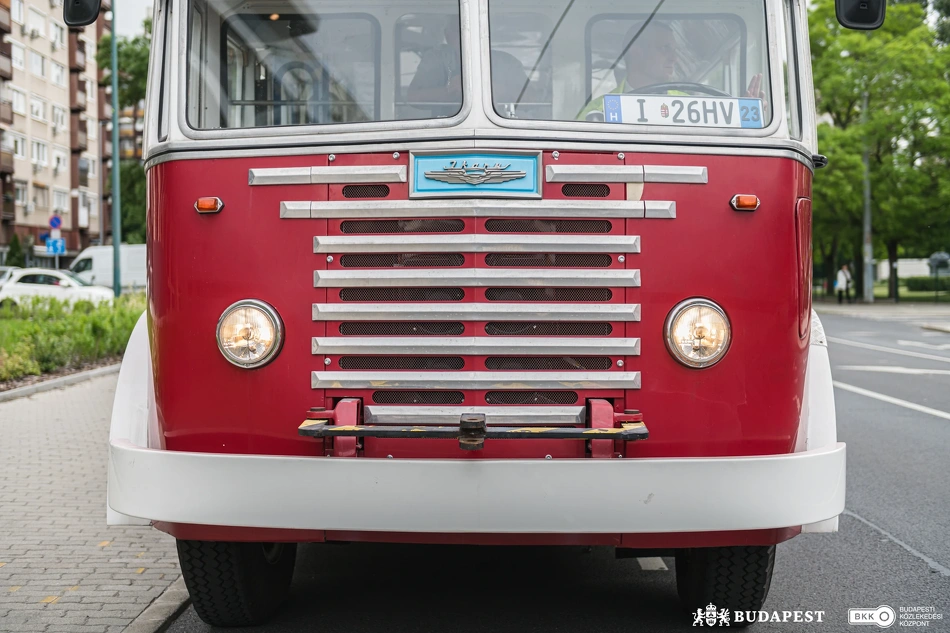
600 Ikarus 260T vintage trolleybus
In 1974, the Ikarus 260T trolleybus with the number 600 was developed jointly by BKV and Ikarus. Two of the type were built. The first one - the 600 - was equipped with the electronics of the Soviet-made ZiU-5 trolleybus, and was put into service in 1975 with the original Volán bus company yellow livery, but was repainted in 1976 in “trolleybus red”. (The other 260T was equipped with Ganz electronics for export to the German Democratic Republic and operated in Weimar. It was returned to Hungary in 1995, where it was dismantled.) The 600 ran in Budapest from 1976 until it was scrapped in 1995, and ran on all trolleybus routes. After the vehicle was withdrawn from service, it was preserved as a museum piece, but due to its deteriorated chassis, the original 600 was dismantled in 2006. Therefore, in 2007, BKV used another Ikarus 260 chassis to build a vintage vehicle that is still in service today, reflecting its 1974 production condition. It is located at the Zách utca Depot in excellent technical condition and is the only yellow coloured trolleybus in Budapest in the heritage fleet.
ZiU-9B type vintage trolleybuses
The ZiU-9 (ЗиУ-9 in Russian) is a type of trolleybus produced in the Soviet Union from the early 1970s. Designed as a replacement for its predecessor (the ZiU-5), it had a more modern body and lower production costs, but still incorporated the electronics of the earlier series, and became the most popular single trolleybus in Soviet cities and the Eastern Bloc from the late 1970s. The ZiU-9 trolleybus, which was available at a low price within the COMECON (Socialist states) was purchased by BKV in a total of 173 vehicles between 1975 and 1984. It is interesting to note that the ZiUs purchased in different years had slightly different designs as the factory introduced innovations in the meantime, and all ZiUs originally came with square Soviet headlamps, but from the second half of the 1980s onwards they were replaced by the now familiar round Ikarus headlamps, which protrude slightly from the front wall. A special feature of these vehicles is that the brake pedal is on the left side of the steering wheel, so that the brakes have to be applied with the left foot. The vehicles were gradually withdrawn in the 2000s, and on 31 December 2012 the city bid farewell to the last ZiU-9B trolleybus in a ceremony. The heritage fleet includes three ZiU-9B trolleybuses (927, 929, 938). The type was notorious for its extremely dynamic acceleration, but now, in view of its museum value, the engine power has been cut back to ensure that it will continue to serve vintage vehicle enthusiasts for many decades to come without any technical faults.
156 IK 280T type vintage trolleybus
The Ikarus 280T trolleybus is based on the 280 bus, with the same body as the bus, electronics and drive system originally transferred from the scrapped ZiU-5 trolleybuses. This type is not to be confused with the Ikarus 280.94T GVM (Ganz Villamossági Művek) vehicles, which had a similar body to its predecessors but had a Ganz drive system; this type is still in passenger service today. But to return to the 280T: the prototype was built in 1975 and, after successful trials, BKV bought 78 more in 1976-78. The Ikarus 280Ts were simply called " Ikarus one-hundred " because of the track number range. Trolleybus 156 was the first of the 1978 series. The 280T trolleybuses were gradually replaced by the more modern GVM models from 1987 onwards. Some of the 280T vehicles were retained for preservation, but due to improper storage and lack of protective maintenance, their condition has deteriorated considerably. When the decision was taken to refurbish a 280T trolleybus, 156 was the preferred choice, but it was determined that refurbishment requiring complete chassis replacement would be necessary and it was considered simpler to convert a GVM to a 280T. This was done. The prototype Ikarus 280T, originally built in 1987 with the track number 199, and powered by the ZiU-9 972, was converted to a GVM in 1996 and given the track number 283. It was used in this way until 2014, when it was withdrawn from service. At that time, the need arose to build a vintage 156; the 283 was used for this purpose, and was converted back to 156, as the original 156 had been scrapped. It is worth noting that the brake pedal was also moved to the left foot, as it had originally been on the type. From 2015, the trolleybus with the number 156, reminiscent of the 280T type at the time of production (but with a ZiU-9 instead of a ZiU-5), became a truly unique member of the heritage fleet.
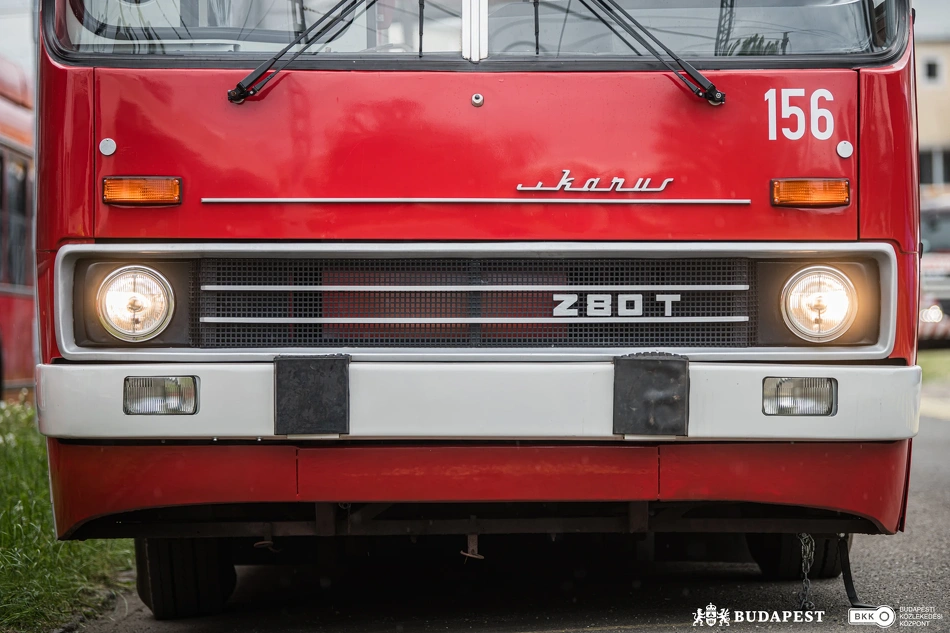
MÁVAG Tr5 type vintage bus
The MÁVAG Tr5 bus is in some respects considered to be an Ikarus predecessor, as it was the basis for later vehicles, especially the Ikarus 60. MÁVAG was the largest bus supplier to the BSZKRT Company in the 1940s. Around two dozen of the 9.5-metre-long Tr5 urban version were built and entered service between 1948 and 1950. Due to the level of technology at the time, these buses served the people of Budapest for only a few years, and after their decommissioning, none were retained for preservation. By a stroke of luck, a single vehicle was found in 2014 built into the structure of a house in the small town of Verőce in the Danube Bend area. BKV experts removed the vehicle from its static position by demolishing the house. The vehicle was in very bad condition: it had neither wheels nor even an axle. Most of the side plates were rusted and some were missing. Only the chassis remained relatively intact. The vehicle was taken away by BKV, and after its restoration, it was ready for service by the centenary of bus transport in Budapest in spring 2015, and was on the road with registration number PBC-255, making it the oldest vintage bus of BKV.
Ikarus 60 vintage bus
The first Ikarus 60 bus was built in 1951 at the Ikarus plant in Mátyásföld (part of Pest), in cooperation with Csepel-Steyr. Series production started in 1952, and 1,744 of them were built until 1959, with a large number of vehicles being exported to the GDR and the Soviet Union. The type was considered to be extremely comfortable, modern and spacious at the time. The leather seats in the passenger compartment (at that time the trams still had wooden benches) were noteworthy, but driver comfort was not a priority, and steering assistance was not fitted. The robust construction of the Ikarus 60 is testimony to the fact that the vehicles were able to push each other without serious damage. In the 1970s, at Kálvin tér, the buses on line 9 gave rescue pushes to the trolleybuses on line 74 stuck under particularly long isolated sections of tram crossings; while the trolleybuses regularly pushed stalled articulated buses into the stops. Rumour had it that after a while, drivers would push each other without any prior discussion if buses stood for unusually long periods with their doors closed. The Ikarus 60 buses, with their particularly robust construction, were withdrawn from the Budapest Bus Company (FAÜ) fleet in the late 1960s. One vehicle was preserved, then restored by BKV in the 2010s and has since become part of the heritage fleet.
Ikarus 180 articulated bus
The Ikarus 180 is Ikarus' first articulated bus to be produced in series. The prototype of the vehicle was presented at the Budapest International Fair in 1961, although the vehicle exhibited there was not yet ready for operation due to the lack of a suitable drive train. Its design is attributed to László Finta, and series production lasted from 1967 to 1973. A total of 416 Ikarus 180 buses were in service in the Hungarian capital, while various versions were exported to Soviet, East German, Romanian, Bulgarian, Polish, Egyptian, Iraqi, Tunisian and Mongolian cities, as well as to a number of regional Volán bus companies. The last Ikarus 180 buses operated in Budapest until January 1980, when they were withdrawn from service. The interesting thing about this type is that the 50,000th Ikarus vehicle produced was also a type 180 articulated bus, and it was the first factory-built (i.e. not in-house built) articulated bus in the BKV fleet. The special feature of the Ikarus 180, currently bearing licebse plate number AA-IK-180, is that it was immediately classified as a bus to be preserved after its withdrawal from service, was renovated in 1990 for the 75th anniversary of the Budapest bus service and has been (re)transporting passengers since the early 2000s, now as part of the BKV heritage fleet.
Ikarus 630 Cabrio vintage bus
The Ikarus 630 is a type of bus produced between 1959 and 1971, mainly for long-distance traffic. There is only one Ikarus 630 convertible bus in the world with 38 seats, which was produced in 1971 as a closed body version. The 630 bus was in service in the former German Democratic Republic and was found by a local collector in Cottbus, before being transferred to Hungary. It was purchased by BKV in 2017 and subsequently underwent a full restoration. It was then converted into a convertible and received its original Budapest Bus Company (FAÜ) livery. The bus is powered by an 8276 cc, 146 hp (107 kW) original Csepel engine and has an original gearbox. It is the most unique example of the Budapest vintage bus fleet.
Green-coloured, vintage cogwheel trailer car with track number 2, made in Vienna
The construction of the Budapest rack railway began in 1873, and after less than a year the first train left Városmajor for Széchenyi Hill in the summer of 1874. Initially, the trains consisted of a special Swiss-built steam locomotive and one or two, or in rare cases three, Vienna-built trailers. The trains were allowed a speed of 12 km/h on uphill gradients and 7.2 km/h on downhill gradients, with a capacity of 70 passengers per trailer car. The trailer was driven on the uphill side of the train, and accordingly a lookout was employed at the uphill end to sit at a designated place on top of the trailer and operate the brake of the trailer. He can still be admired today in the form of a dummy. Built in 1874 and 150 years old this year, the green trailer car was withdrawn from service in 1929 and steel-framed in 1955. It was restored to near-perfect condition in 1999 and today is usually coupled to an SGP G/T1G motorised car to remind passengers of the past of the cogwheel railway.
Rowan-type Ganz vintage cogwheel railway train
The cogwheel line was electrified by 1929, and the railway tracks were also renovated. In parallel with the electrification, the steam trains became obsolete. The BSZKRT Company then acquired 8 new electric Rowan-type Ganz trains. It consisted of a two-axle electric locomotive and a single-axle trailer attached to it from the mountain and supported on the locomotive chassis. The speed of the train was now 12 km/h both uphill and downhill. The Rowan trailers had a total of 64 seats, 10 of which were first class, separated by partitions from the second-class seats. Due to the deterioration of the Ganz trainsets and the track, BKV planned to purchase new trainsets in the 1970s. The last time a Rowan-train was in public service was on 15 March 1973. Motorised car No 30 and semi-trailer No 40 were preserved by BKV for museum purposes, and underwent a complete external refurbishment in 2004 and a technical refurbishment in 2023-24. Because of its priceless value, it is rarely used.
MUV Tram
In 1993, BKV began upgrading twenty UV3 motorised tram cars by rebuilding the second driver's cab and installing heating, glitter flooring, new seats and fluorescent lighting. These became the modernised UV trams, or MUVs. As originally planned, they would have operated as twin-trams during the day on weekdays and as single trams in the evenings and at weekends, when passenger numbers were lower. BKV then planned to run tram services in several areas at night. The 20 cars that were completed typically ran on line 17 from 1993 to 1996, and then on the former line 30 and line 52 from 1996 to 2003. Interestingly, they were originally planned to be refurbished with two headlights, but the idea was abandoned due to aesthetic concerns. The unique and small series of trams were due to undergo a main test in 2003, which was cancelled due to lack of funds, and it was therefore decided to scrap the cars. Thanks to the intervention of a non-governmental organisation, one vehicle was saved and, after its renovation, it now has a retro feel reminiscent of Budapest transport in the 1990s and early 2000s.
UV-type Tram
By 1956, Ganz Factory engineers had created a tram with UV lettering, a further development of the earlier Stuka type trams, which from then on was a dominant part of the Budapest streetscape for more than half a century. Between 1956 and 1965, 375 UV trams were produced. The 'U' refers to the type while the letter 'V' to the remote control, i.e. the fact that two vehicles can be controlled from one driver's cab. The first cars in the series had two driver's cabs, but these were later removed, and subsequent orders were made with one driver's cab as standard. Over the years, the trams have been combined with a variety of trailers, which have been standardised. Their typical form of operation was a train consisting of a trailer coupled between two motorised cars. The tram type was in service without any particular modernisation or modification until 2007, which testifies to its high degree of reliability. The UVs were finally withdrawn from service after the Hanover TW6000 and the Combino trams started operating. In the last years, they were typically only used on lines 41 and 47. The four motorised cars still in service today are the survivors of the younger UV5 sub-series of the series. During the festive Advent and Christmas season, the UV type is still in regular service as a "Christmas Tram" illuminated to the great delight of residents and visitors alike.
278 Ikarus-GVM type 280.94T, retro articulated trolleybus
As a successor to the Ikarus 280 trolleybuses with ZiU electronics, Ganz Electricity Works and Ikarus Bus Manufacturing Company developed the 280 sub-type with a pioneering solution at the time, the engine with a chopper switch, which was exported in large numbers to the GDR and Bulgaria. The 280.94 model was delivered to Budapest by Ikarus, and between 1987 and 1989 BKV took 83 (numbers 200-282) into stock. The first seven of these were still delivered with accordion doors, but in the early 2000s they were converted to inward gliding doors like the rest of the series, with two exceptions. They quickly became the mainstays of the Budapest network, and their reliability is shown by the fact that they are still the last high-floor model still in use in public transport! Trolleybus No. 278 was restored to its production condition a few years ago, and is a fitting tribute to the last type of Ikarus trolleybus built for Budapest in large numbers. GVM trolleybuses are still in service in Szeged, and four former BKV GVMs are in service in Ukraine.
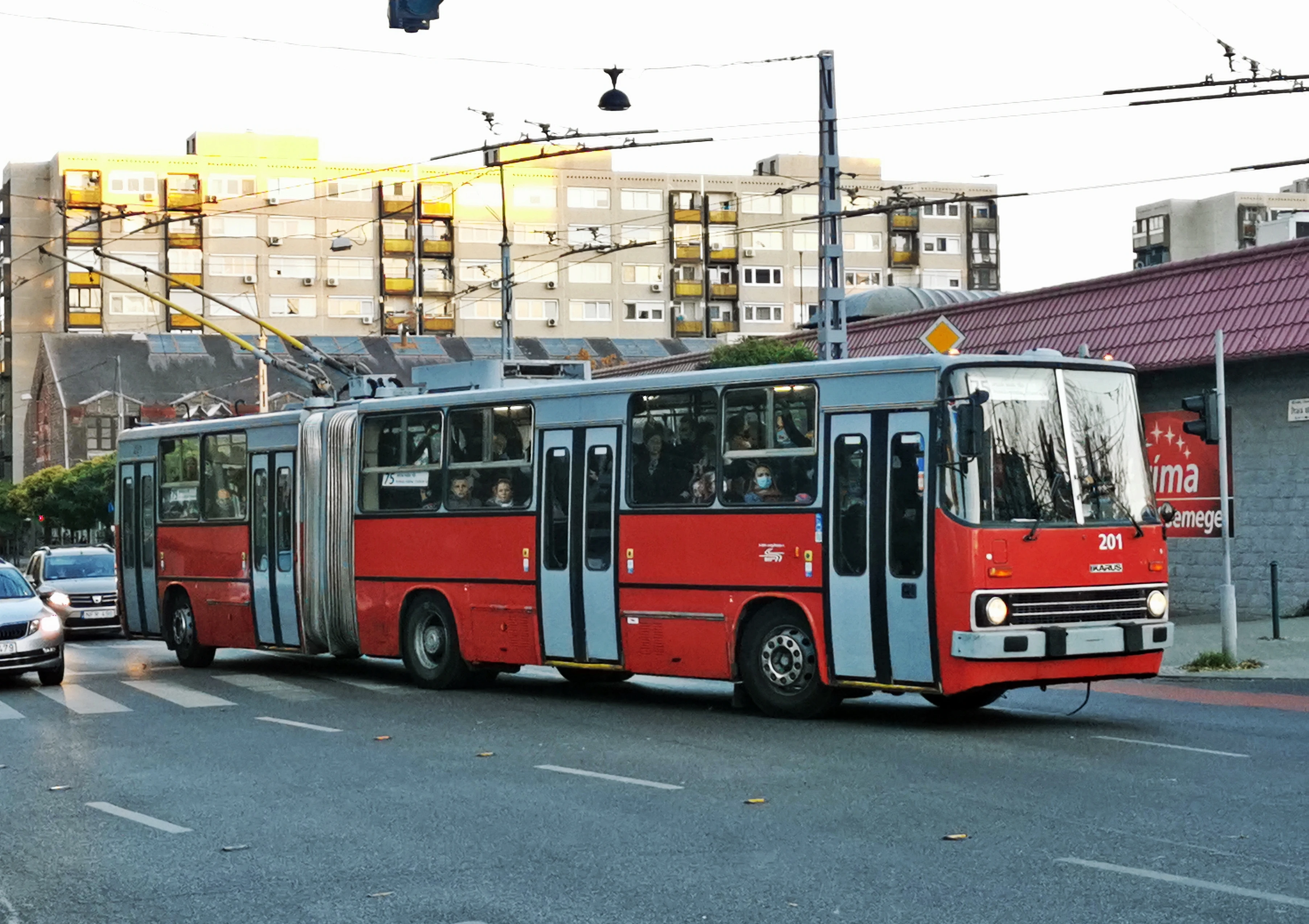
Ikarus 435T type retro articulated trolleybus
The trolleybus version of the Ikarus 435 is the 435T (also known as 435.81), of which BKV bought 15 between 1994 and 1996. The electronics in the vehicles, which have the same body as the buses, were supplied by Obus-Kiepe. They were produced between 1994 and 1996, with plate numbers ranging between 300 and 314. Their purchase was justified by the drastic deterioration of the first series of Ikarus 280T trolleybuses, which led to the choice of more modern vehicles instead of refurbishing older types. Interestingly, the B axle was driven, but the C axle was not forced steered, so the turning circle was inferior to that of the 280T or GVM vehicles. The vehicles were refurbished depending on their technical condition, and all but one were upgraded by 2013. The vehicles were used on all lines, but typically on lines 77 and 80 in the Zugló neighbourhood. Due to high maintenance costs, one vehicle was withdrawn in 2014, three more in 2019, while the remaining 435T were scrapped in 2023. The withdrawal of the type from public service also means the withdrawal of the medium-floor Ikarus 400. Only the 435T with the best technical condition, plate number 309, has been preserved and has since become part of the retro fleet.
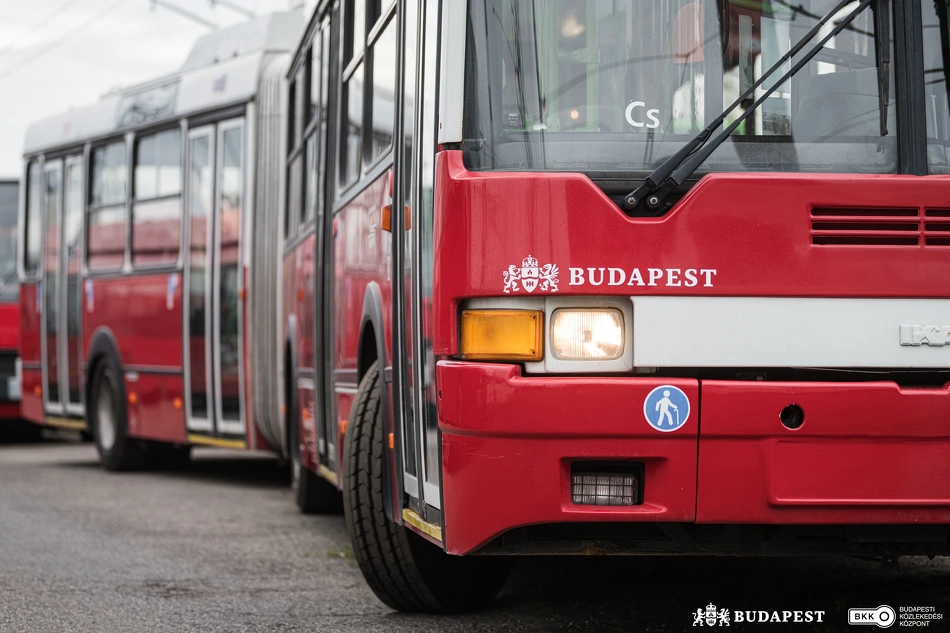
ÖAF Gräf & Stift NGE 152 M17 type MAN trolleybus
The NGE 152 M17 and M18 three-axle articulated trolleybuses, manufactured by Gräf & Stift in 1993 and 1994, were purchased by BKV from Eberswalde in Germany in 2011. The rationale for the purchase was that it was cheaper than refurbishing old vehicles and was intended to replace older types, not to renew the fleet. At the time, BKV pointed to their favourable fuel consumption, which, compared with ZiU vehicles, resulted in half the consumption per passenger seat. Trolleybuses with plate numbers 350-364 became the typical vehicles on lines 80 and 82. Due to electronic and chassis defects, five vehicles of this type were withdrawn in 2017. The remaining 10 vehicles were in service until their last days, being permanently withdrawn from service at the end of 2022 and beginning of 2023. One of them, trolleybus 359, was taken into preservation stock for “retro” use.
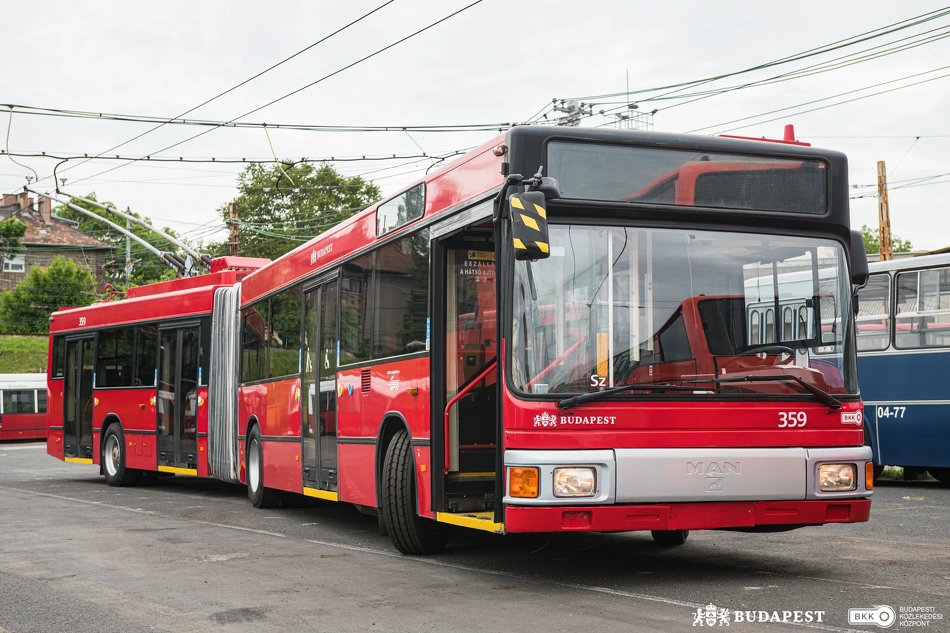
Ikarus 260 and 280 retro buses
The Ikarus 200 series is Ikarus' most successful city single bus, known and used all over the world, and is the pride of Hungarian industry. The 200 series was built in 1966 to the designs of Hungarian engineers and designers and, due to varying order requirements, came off the production lines in a variety of sizes and equipment. Their success is reflected in the fact that they have been sold to many countries around the world: the Soviet Union and the GDR have bought the largest numbers, but there have also been several examples in Poland, Turkey, Venezuela, Iran, Madagascar, Syria, Cuba, Taiwan, Tanzania, Iceland and many others. The family is still very popular today for its high reliability and, following its period restoration, is regarded as a heritage bus in many places. The prototype of the Ikarus 260 series was introduced in 1971, with series production from 1972 to 2002. A total of 72,547 units of the 260 rolled out of the Ikarus factories in Matyásföld (Budapest) and the City of Székesfehérvár. The folding ‘concertina’ door bus with the registration number BPO-671, which was in service from 1981 to 2001 and then renovated in 2013, has a retro feel and gives a true picture of the typical bus transport of Hungary in the 1980s and 1990s. In addition, there are a few 260s in the retro fleet, including, but not limited to, the BPO-301 with its early 2000s "silver arrow" livery, the BPO-147, which is typical of the latter days, and the NCA-263, a preserved 263, which is one metre longer than the 260.
The prototype of the Ikarus 280 series was officially unveiled in Budapest in 1972, and went into series production from 1973 until 2002. It replaced the Ikarus 180. It accounted for two thirds of the world's articulated bus production, with a total of 60,993 buses built. It is interesting to note that one of the first production series, number plate BPI-280 (today), built in 1973, was scrapped after seven years in 1980, in line with the practice of the time, and then used as a “restaurant bus” for a decade and a half before being sold in the second half of the 1990s. The vehicle was reacquired by BKV in 2017 and refurbished to coincide with the 50th anniversary of its serial operation in Budapest, and from November 2023 it has been the "youngest" member of the retro fleet. But there is more than just one Ikarus 280 in the collection: in addition to the BPI-280, there is a BPO-477 with a folding door, but more typical of the 1990s, a BPO-449 with the "7-173 GYORS" livery dedicated to the Rákóczi út express services, and two vehicles in their last state of circulation, the BPI-829 and the BPI-979.
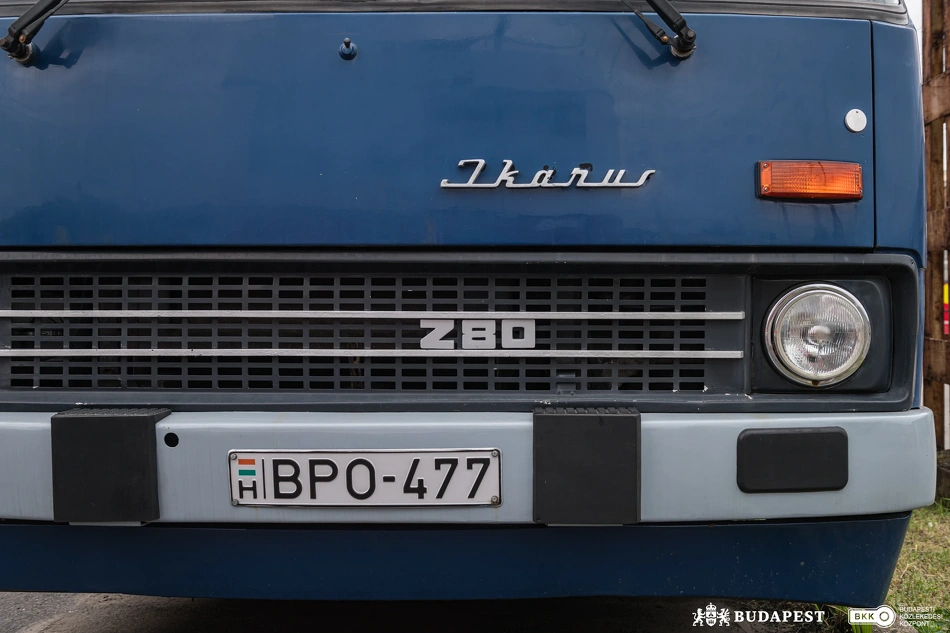
Ikarus 284 pusher-type articulated retro bus
The Ikarus 284 is Ikarus' first – pusher-type articulated bus. It was based on the famous 280, but with the engine in the articulated section. A prerequisite for this was the invention of the hydraulic damping control system. The Ikarus 284 prototype was presented by Ikarus at the Budapest Exhibition and Fair in 1981. By placing the engine behind the articulated joint, the previous floor height of 920 mm was reduced to 740 mm, which was considered outstanding for the time: it could now be called a medium-floor. The engine compartment meant that the 4th door could not accommodate the double inward-gliding door, and the length of the vehicle had to be increased by one and a half metres compared with the 280. This type was intended to introduce the 400 family, of which the pusher articulated vehicles were already in series production. The Ikarus 284 is a clear transition in appearance, technology and design between the 280 and the 435. Between 1981 and 1991, 11 units of this type were produced, because by the time it was fully developed, the 435 had already been completed and was ready for series production. BKV used one of these vehicles, and they were also delivered to other cities in Hungary. One 284 bus operated by the public transport company in the City of Pécs, was transferred to Budapest thanks to the former VT-Transman company, and was in service for a few years after the turn of the millennium. Finally, in 2014, it was bought by BKV, and after a period restoration, it was converted into a heritage vehicle, thus becoming a member of the retro fleet with the number plate MTZ-547.
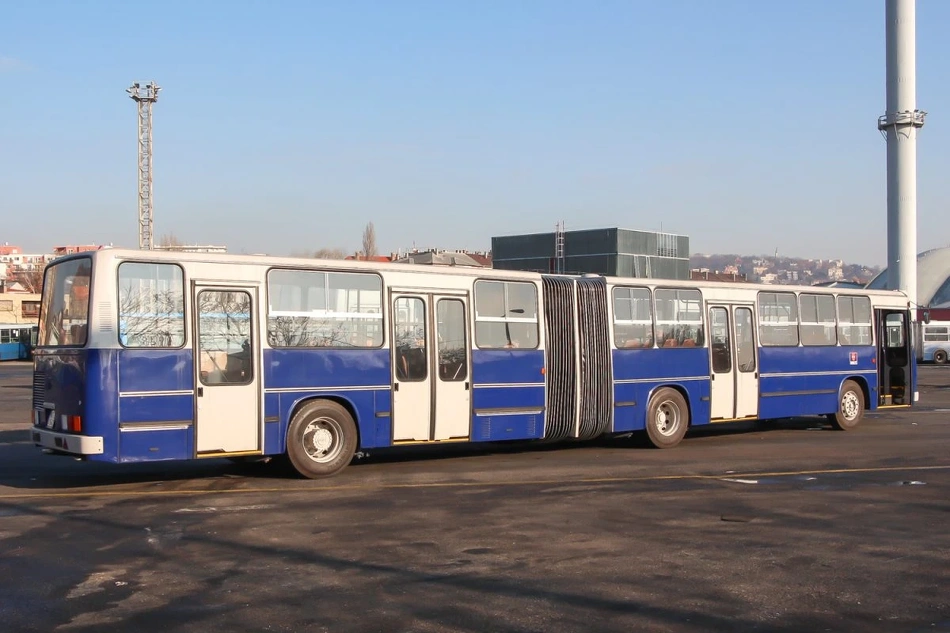
Ikarus 415 retro bus
Building on the success of the 200 family, the Ikarus factory began developing the new series of city and suburban buses with the “400” model designation in the 1970s. The factory's unconcealed aim was to create a series with a much lower entry height than the 200 family, better suited to the needs of the modern age, but equally successful and capable of selling large numbers of units. A special feature of the 400 family is that the engine of the vehicles was placed at the end of the vehicle under the floor and the bodywork was reinforced at the top of the bus (in the roof structure). The 400 family ultimately failed to live up to expectations and never became as popular as its predecessors; only 1,042 of the “415” sub-type were produced and were used in Hungary and by several foreign operators. Budapest has acquired Ikarus 415 buses in several phases, and this type has no longer been in service from summer 2022. BKV restored a 1988-built vehicle with the registration number MZE-415 in 2015 as a museum vehicle, to its original production condition, and it has since become part of the retro fleet. In addition, BKV has also restored another 415, with plate number BPI-415, produced in 1993, which bears later styling features. These two vehicles are reminiscent of Budapest transport in the 1990s and 2000s with their retro atmosphere.
Ikarus 435 retro bus
An improved version of the Ikarus 284 bus is the 435, a medium-floor, pusher-type articulated bus. The first series was produced in 1985, the second in 1994, which lasted until 2002, and a total of 757 were built. BKV purchased 171 of the type at a price of 24 million HUF each at the time. In the light of the past, the 400s would be worthy successors to the 200 family in almost every respect. Except perhaps for the unavoidable fact that, due to the poor state of the roads in Hungary, the 400s could not be expected to have the long service life of the 200s. For this reason, they started to be withdrawn from service in 2013 due to their deteriorating technical (mainly chassis) condition, but most were withdrawn in 2015-16. The last Ikarus 435 buses were withdrawn from service in 2022. The 435 with registration number BPO-583 was placed in stock for preservation purposes in 2018 and has since been part of BKV's retro fleet. Alongside it, the vehicle with the number plate BPI-923 was also saved in its last state of circulation.
Ikarus 412 retro bus
Ikarus started its low-floor programme in the early 1990s, one of the early members of which was the 412, a one-metre longer version of the 411, which was introduced as a prototype in 1995 and remained in production until 2001. A total of 120 units of 412s were built for BKV, and were delivered to Budapest in 1999 and 2001. The 412 with the registration number BPI-007 was one of the first to enter service in 1999. It was temporarily withdrawn from service in 2014 due to its poor technical condition, after which it received a chassis overhaul and other minor refurbishments in Székesfehérvár. It made its debut again in 2015, on the open day of the BKV South-Pest Division, where it was seen for the first time by passengers. After that, it was back in passenger service until 2018, in a condition almost as it was when it was built. In 2018, it was decommissioned for preservation and has been part of BKV's retro fleet ever since.



